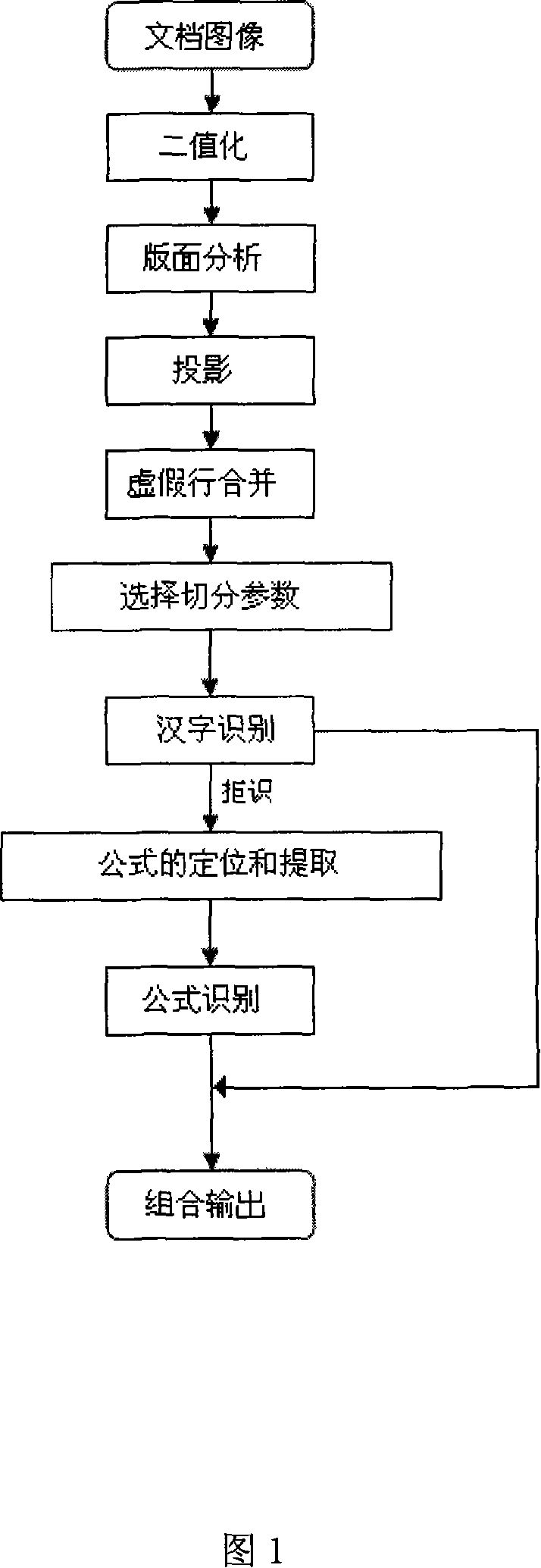Chinese printing style formula identification method
A formula recognition and printing technology, applied in the field of recognition, can solve problems such as inability to recognize mathematical formulas
- Summary
- Abstract
- Description
- Claims
- Application Information
AI Technical Summary
Problems solved by technology
Method used
Image
Examples
Embodiment Construction
[0053] The present invention is described in more detail below in conjunction with accompanying drawing example:
[0054] The purpose of the present invention is to overcome the deficiencies of the existing OCR system technology, and provide a printed mathematical formula recognition technology supported by layout analysis and Chinese character recognition technology. It includes 3 modules of layout analysis, Chinese character recognition and mathematical formula recognition, among which layout analysis and Chinese character recognition are the pre-processing of mathematical formula recognition. It is with these two parts that the formula recognition module can correctly locate and recognize formulas. So the three of them are inseparable.
[0055] 1. Document layout analysis
[0056]Layout analysis is one of the pre-processing techniques for text recognition. It uses image processing, artificial intelligence and other technologies to complete the segmentation and attribute l...
PUM
 Login to View More
Login to View More Abstract
Description
Claims
Application Information
 Login to View More
Login to View More - Generate Ideas
- Intellectual Property
- Life Sciences
- Materials
- Tech Scout
- Unparalleled Data Quality
- Higher Quality Content
- 60% Fewer Hallucinations
Browse by: Latest US Patents, China's latest patents, Technical Efficacy Thesaurus, Application Domain, Technology Topic, Popular Technical Reports.
© 2025 PatSnap. All rights reserved.Legal|Privacy policy|Modern Slavery Act Transparency Statement|Sitemap|About US| Contact US: help@patsnap.com

